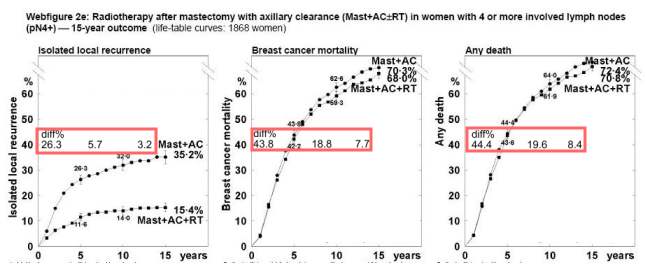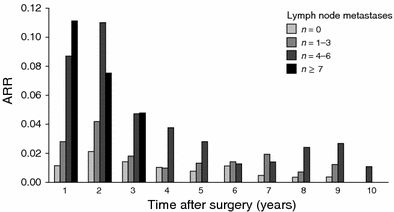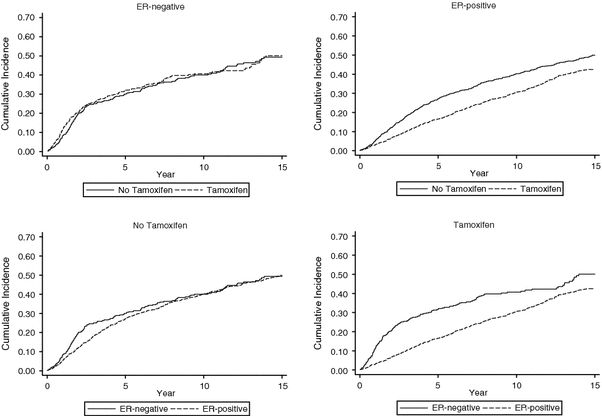Breast cancer recurrence and mortality
The following study illustrates
two epidemiological hallmarks of breast cancer:
1. An accelerated mortality and recurrence rate during the first three
years
2. An ongoing deceleration thereafter.
The first is a manifestation of the
bi-modal hazard rate (BMH) which is explained elsewhere
The second hallmark illustrates the improving prognosis of
the patient. The longer she lives the better her chances to survive.
As cancer progresses patient succeeds living with it better and better.
The objective of the Early
Breast Cancer Trialists' Collaborative Group
(EBCTCG) (1)
study was to examine the relationship between the risk of loco-regional
recurrence and long-term breast cancer mortality .Collaborative meta-analyses
were undertaken, based on individual patient data, of the relevant
randomized trials that began by 1995. Information was available on
42 000 women in 78 randomized treatment comparisons (radiotherapy
vs
no radiotherapy, 23 500; more vs
less surgery, 9300; more surgery vs
radiotherapy, 9300). 24 types of local treatment comparison were identified.
To help relate the effect on local ( locoregional) recurrence to that
on breast cancer mortality, these were grouped according to whether
or not the 5-year local recurrence risk exceeded 10% (<10%, 17 000
women; >10%, 25 000 women).
The following figure
was reproduced from their WebFigure 2e. The red boxes were added by
me. They depict the percent difference between observations made at
5, 10 and 15 years. The curves start with an accelerated phase and
gradually decelerate.

References
1. Kimura, Yasuhiro Yanagita, Tomomi Fujisawa and Tokihiro Koida
Study of time-course changes in annual recurrence rates for breast
cancer: data analysis of 2,209 patients for 10 years post-surgery
Breast Cancer Research and Treatment, Volume 106, Number 3 / December,
2007
2. Mahmoud R. Khoshnoud , Tommy Fornander , Hemming Johansson and
Lars-Erik Rutqvist
Long-term pattern of disease recurrence among patients with early-stage
breast cancer according to estrogen receptor status and use of adjuvant
tamoxifen
Breast Cancer Research and Treatment Volume 107, Number 1 / January,
2008
3.
Early Breast Cancer Trialists' Collaborative Group (EBCTCG)
Effects of
radiotherapy and of differences in the extent of surgery for early
breast cancer on local recurrence and 15-year survival: an overview
of the randomized trials
The Lancet Volume 366, Issue 9503, 17 December 2005-6 January 2006,
Pages 2087-2106

